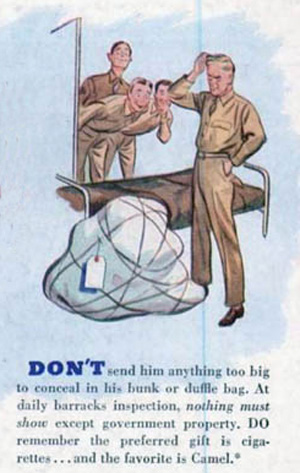
 August always used to seem so big. It still does, in my mind, but the longer you live the more you know it has feet of clay. Its size and breadth and width, its languid rote heat - rather than seem like Summer's bulwark against the coming o the cold climes, it seems like an argument made with an intensity that belies the speaker's own insecurities about the validity of his position. It doesn't help that school starts at the end of the month - psychologically, that ruins everything. I doesn't help that the Fair arrives at the end, because even though the Fair sums up everything great and mean about summer, its pleasures and discomforts, it's the stemwinder that leads to the speaker mopping his brow and saying "In Conclusion." August always used to seem so big. It still does, in my mind, but the longer you live the more you know it has feet of clay. Its size and breadth and width, its languid rote heat - rather than seem like Summer's bulwark against the coming o the cold climes, it seems like an argument made with an intensity that belies the speaker's own insecurities about the validity of his position. It doesn't help that school starts at the end of the month - psychologically, that ruins everything. I doesn't help that the Fair arrives at the end, because even though the Fair sums up everything great and mean about summer, its pleasures and discomforts, it's the stemwinder that leads to the speaker mopping his brow and saying "In Conclusion."
I found myself musing aloud to Daughter on the way to work that I was slightly, just slightly, tiring somewhat, a bit, just a jot, of summer. Which is madness. But it's so. We never tire of spring or fall, but the tentpole seasons? Eventually. She said she understood and sorta kinda looked forward to the order of Fall, the structure. This I understand because I do not live an office life, and summer still has the trumpet notes of freedom. The arrival of fall means the beginning of the long procession that carries us aloft on its shoulders until it turns over the litter on the first of January, and that has its pleasures.
What the hell am I talking about? I should relish this. And I do. But I've felt different the last few summers, less engaged. In a way that holds true for many things, and I don't like it. The other day I was arranging some websites for next year, some updates of the Gallery of Regrettable Food, thinking: it's been 20 years. When I started there was a slender piece of connective tissue between the present and the past, and now it feels as if I am reporting from a foreign country that disbanded its government.
But sometimes the connections spark to life. I am halfway through a site about . . . TV and Radio station advertising logos in the 40s and 50s. Why? Well, why not. I found some industry magazines that have ads for the stations, and each one is a window into a local institution that was part of people's aural collective memory for a while. The jingles, the voices, the news sounder at the top of the hour. It's important to remember these things. Maybe it's just because I was in the business once, and felt pride at saying the call letters. This was a long and honorable tradition, connected to a place, a time, an invisible audience gathered in the dark. So I chose the best logos and set them aside in the 2017 Sites to Come folder, and now I'm finishing it up. (Also working daily on the Obscure Movie Stars of the Silent era Publicity Photo site, and the 1969 Green Stamps Booklet Art site, which is slated for September 2017.) Googling one station revealed a lost history - it had been bought by a big city station and turned into a repeater, and YouTube had a video of the last news broadcast from the local crew.
To my surprise the weatherman was a guy who did the weather in Fargo when I was growing up. I went to school with his daughter (who had long brown hair.) (If you remember such things it's possible you had a crush.) He did the kiddie show: Captain Jim. When you were a kid and it was your birthday you got to go on Captain Jim's show in Fargo, and my mother took me. I remember nothing except the moment I walked from the bleachers to the set: I was supposed to walk around the cameras, but I walked straight from the seats to the set, stepping across the cables, and Captain Jim said "Whoa, you're walking through the ocean there."
The ocean. The space between the seats and the set was the ocean. Of course it was. His set was the ship. It was imaginary but it was true but it wasn't true. This isn't the sea. But he says it's the sea. It's the sea.
And I thought, I should call him. I should tell me about that. Some details from his bio:
Serving during World War II as a radioman on fighter-bombers base on the U.S.S. Saratoga, Rohn suffered serious hearing loss and had to use hearing aids, Vagle said.
Rohn, who grew up in Alsen, N.D., enlisted at age 16 with his parents’ consent, he said.
And by bio I mean his obit. He died last year at 88.
Rohn’s decades on the airwaves, and the connections he made with viewers and listeners, made him a revered figure to many.
“Between Fargo and Alexandria he’s an institution, without a doubt,” Vagle said.
He was known to viewers who grew up in the 1950s and 1960s as “Captain Jim,” his persona in a children’s show, a name that stuck among viewers of a certain age for years afterward.
Rohn also hosted “Polka Party” on Saturdays, dressed in a Bavarian lederhosen outfit.
Damn right he did.
So the connections spark to life, if only remind us that it's important to remember. And to add something. I get irritated at a few tumblr accounts I follow, or see links to, because they just dump a RETRO or VINTAGE picture on the web without saying anything. You have to say something. It's good to keep these old images in the modern mediums, to scan and post, but you have to say something or it's just a slide show with a silent skeleton running the Kodak projector. Those of us in the great ad hoc past-remembrance project of the internet are a bucket brigade - and if you wonder if we're trying to put out a fire or fill a parched pond, of course the answer is Both.

 |
|
|
 |
|
Nothing must show except government property.
There's a phrase you wouldn't want to live under for an extended period of time, would you?
And here we learn what the ad is for. Of course. |
 |
|
|
 It's the County Seat. It has 12,600 souls, and it's named after the captain of the USS Ironsides. Every year they have a Swine Time festival. Let's take a look at their downtown. It's the County Seat. It has 12,600 souls, and it's named after the captain of the USS Ironsides. Every year they have a Swine Time festival. Let's take a look at their downtown.
E. J. Perry ran a construction company, so this was a billboard of sorts:
This page says the structure next door is also the E. J. Perry building, which seems wrong; they're obviously built in different stages with no attempt to link them together. It's possible E.J. built on the corner first; that would be a nice prestigious location. Did he build two stories, then add a third? It's almost impossible to say either way. Perhaps he built something next door as well, but if you're going to build something that advertises your name, you'd want to make it bigger.

Sometimes I save a particular shot, then ask myself later: why?
Perhaps the lone tree, the blank wall - and perhaps it was the awning over the door. Completely unnecessary, unless you wanted to stand in the doorway for a while without getting heat stroke. I suppose it told you where the door was, but that couldn't have been too much of a mystery.

Well, it has to get better, and it will. But:
It looks as if nothing has occupied the storefronts since the crash of '29.

Was it always thus?

I don't think so; must have been a bank. It's too ornate for a City Hall. There's a time when everyone's feeling flush and full of civic pride, and sure, shoot the moon, build something that puts the town on the map. But such excesses seem wrong for a city hall; they connote wastefulness.
For a bank, of course, it means STRENGTH.

This makes no sense.
It's an utterly undistinguished building; it would look nicer if the original hues of the brick hadn't been painted over. But what's with the upper floors? What are those small squares? Did they brick over large windows - and wouldn't those windows have looked out of scale to the rest of the building? Rise, oh shade of E. J. Perry, and answer our cries!

Another example of the smothering power of paint:
It does even out the areas that look different because they were bricked, but maybe the answer to that problem is to leave them as they were originally. But no. Someone always had to close up a door or a window.
Also an example of the decorative effects you can get with brick, and nothing else.

OH NOES
OH NOES!

I hope the owner was named Young:
Because that says "corsets in the modern colors" more than the hip styles of today's with-it teens.

Ahhhh.
A perfect little downtown store. Men's clothing, in this case. I can smell it now - pipe tobacco, leather, polish. At least that's what these places were like when I was a kid.

Okay, I don't think that's original.
Of course, it's not. And it precedes its current occupant. That's a classic post-war makeover, covering up the facade with something modern - in this case, patterned stone, which from my experience wasn't too common. Usually a metal screen would suffice.
It's distinctive, which is different from attractive, but it's certainly interesting.

Nothing to see and nowhere to enter; move along.
It looks as if it could come back to life at any moment, though. Someone wanted to preserve what it was while taking away everything for which it was used.

"We got a good deal on this paint."

This sort of raw, forlorn vista suggests that the children who may have wandered through the store on trips downtown with Mom are now eking out their senior years as Wal-Mart greeters, where the real action is.

"So after we've bricked 'em up, we're going to paint 'em, right?"
"Aw, who the hell cares."

For Rent. For Sale. For Pity's sake.

We can't end with something like this . . .
So let's end with with the County Courthouse. From the city's website, ANNOUNCING COMPLETION OF THE DOWNTOWN BAINBRIDGE, GEORGIA PHASE II STREETSCAPE PROJECT
Looks like a completely different city, doesn't it? |